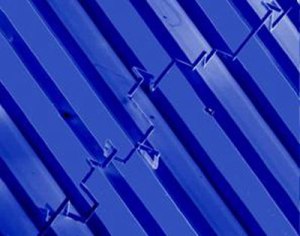Jul 31 2010
A global team of researchers including Andrei Kolmakov, a Southern Illinois University’s associate professor [Physics Department] along with Dr. Victor Sysoev from Saratov State Technical University, Russia, and researchers from Karlsruhe Institute of Technology (KFZ), Rensselaer Polytechnic Institute, Sincrotrone Trieste (Germany) have fostered a unique, low cost, electronic nose (e-nose) prototype which can emulate the human olfactory system.
This prototype is characterized by the usage of tin dioxide based nanobelt, where sensing elements are encoded, along with functional palladium catalyst segments.
 Morphologically encoded nanostructure in contact with array of metal electrodes. Each segment has a different resistance what will provide the required diversity in sensing and as a result the recognition capability
Morphologically encoded nanostructure in contact with array of metal electrodes. Each segment has a different resistance what will provide the required diversity in sensing and as a result the recognition capability
According to Andrei Kolmakov, this e-nose model is a pragmatic and miniature piece of equipment, linking fabricated tin dioxide nanowires, with top-down technology based micro fabrication methods. It is made up of a single-crystal metal oxide quasi-1D nanobelt, arranged with a number of platinum electrodes, such that, between two electrodes, one sensing receptor belonging to the array is defined by each segment of the nanobelt, thereby obtaining several sensors. Resistance varies throughout the span of the nanobelt, due to which the same gas will give out, to some extent, diverse reactions, assisting, in the nanobelt’s ability to recognize. The former versions of nanowire e-noses were utilizing a variety of nanowires, to extract multitudinous responses, which made them more complicated and costly. The newer improved version is much more robust and inexpensive. Kolmakov states that this sensor can be used in microscopic detectors, smart phones, medicines, military devices to name a few. Their future aim is to combine a battery, reporter along with elementary electric circuits into one nanodevice.
The findings of this international team-work have been published in the July 20, 2010 online issue of ACS Nano,